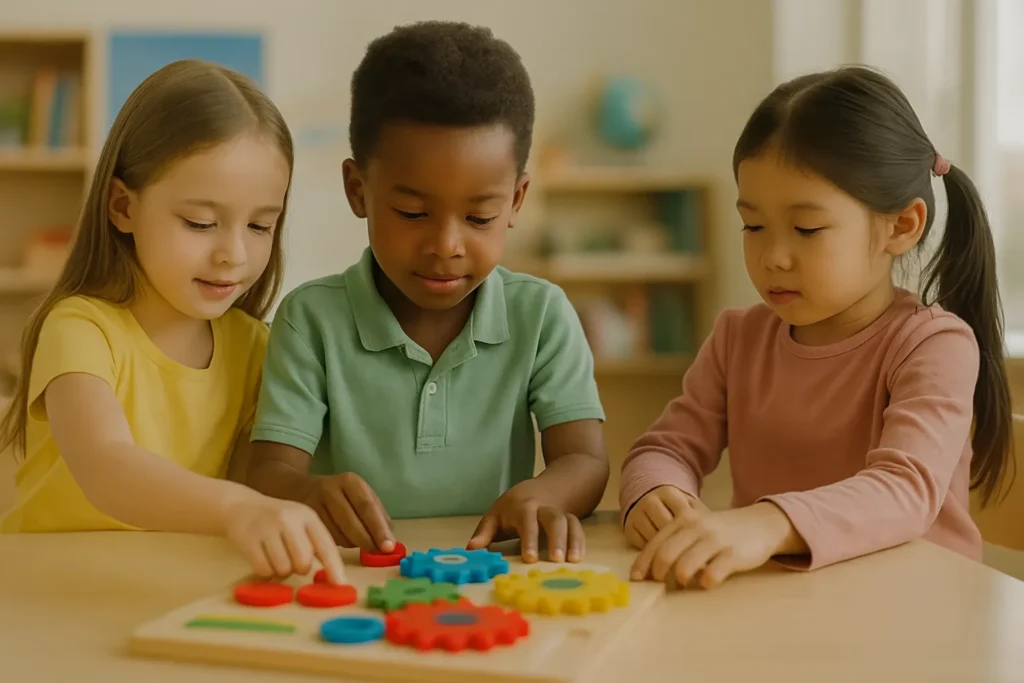
Reclaiming Childhood: How Holistic Learning Can Transform the Future of Education
Holistic education is no longer a luxury — it’s a necessity. Imagine sitting inside a time machine, rewinding 30 years. You’re back in a classroom. Chalk dust in the air, wooden desks aligned, a teacher at the front, and silence the default. If you were a child then, what did learning feel like? Was it inspiring or intimidating? Now, fast forward to today — the world has changed, but has our approach to education truly kept up?
This blog invites you — teachers and parents — to pause and reflect. Not on grades or reports, but on what it means to raise and teach a whole child. Because as we face rising anxiety in schools, fragmented attention spans, and pressure-cooker homes, we must ask: is our education system nurturing the mind at the cost of the heart and hands?
Let’s explore what holistic education really is — and why it’s more urgent now than ever. You can also read more about our Tricycle Model and how it supports a balanced, collaborative framework between children, teachers, and parents.
What Is Holistic Education — Really?
Holistic education isn’t a trendy buzzword. It’s a call to action. A philosophy that nurtures every part of a child: their intellect, emotions, creativity, social awareness, physical well-being, and moral compass. It sees children not as test-takers, but as complex, capable human beings in formation.
At its core, holistic education addresses:
- Cognitive: developing knowledge, critical thinking, curiosity
- Affective: nurturing empathy, emotional intelligence, values
- Psychomotor: building real-world skills, expression, movement
Rather than compartmentalising learning, it encourages an integrated approach. The child doesn’t just learn — they become.
And when teachers and parents commit to this philosophy together, transformation happens.
The Tricycle Model: A Balanced Framework
At the heart of this approach lies the Tricycle Model, developed to represent holistic learning in motion.
Imagine a tricycle:
- The front wheel represents the child — steering their journey
- The rear wheels symbolise teachers and parents — providing stability and direction
- The three spokes within each wheel signify the cognitive, affective, and psychomotor domains
If one wheel wobbles, the journey falters. If one domain is ignored, the child’s development becomes lopsided. But when all parts move in harmony, the child thrives.
This model doesn’t just guide classrooms. It encourages households and schools to form genuine partnerships — where consistency, care, and collaboration replace contradiction.
Why This Matters Now
According to recent studies, emotional distress in school-aged children is on the rise, with teachers overwhelmed by non-academic pressures and parents feeling disconnected from the learning process (Lauricella & MacAskill, 2015; Spychalski, 2023).
Holistic education provides a solution — not by adding more to your plate, but by re-aligning priorities.
In real terms, this looks like:
- Replacing silent reading sessions with collaborative storytelling
- Allowing space for emotion check-ins before lessons
- Involving parents in learning exhibitions
- Encouraging outdoor and experiential learning alongside traditional academics
One teacher from Leeds shared:
“After implementing weekly wellbeing circles in my Year 6 class, I saw not only a drop in behavioural issues but a rise in writing creativity. They finally felt safe enough to express.”
And a parent from Birmingham reflected:
“I stopped asking ‘What did you score?’ and started asking ‘What made you proud today?’ It changed everything.”
These small shifts are powerful — and doable.
A Call to Reflect: A Shared Responsibility
Let’s pause for a moment — not just to read, but to reflect.
Whether you’re a teacher reshaping your classroom or a parent navigating the complexities of modern childhood, one truth remains: you are not alone. Holistic education isn’t the responsibility of one party. It’s a shared journey — powered by trust, patience, and purpose.
The Tricycle Model reminds us that real progress requires balance. If one wheel — whether cognitive, affective, or psychomotor — is ignored, the journey becomes unstable. But when teachers, parents, and children move in sync, learning becomes more than grades. It becomes growth.
So, here’s our invitation to you:
- Pause each week to ask: Am I connecting with the whole child — their heart, mind, and hands?
- Look around your classroom or home: What small change could create a big impact?
- Talk to each other. Teachers and parents, share stories — not just about performance, but about progress.
In an age driven by results, we need to return to relationships.
Let this blog not be the end of your reading, but the beginning of your rethinking.

